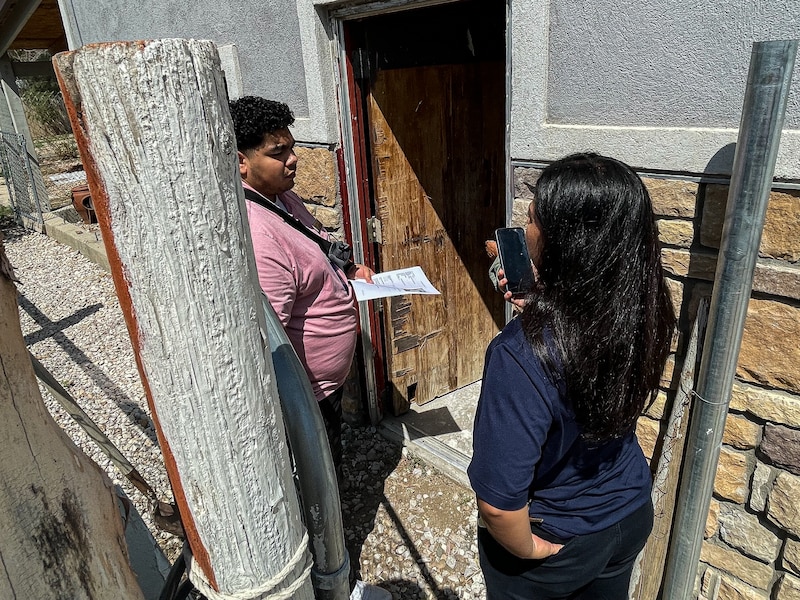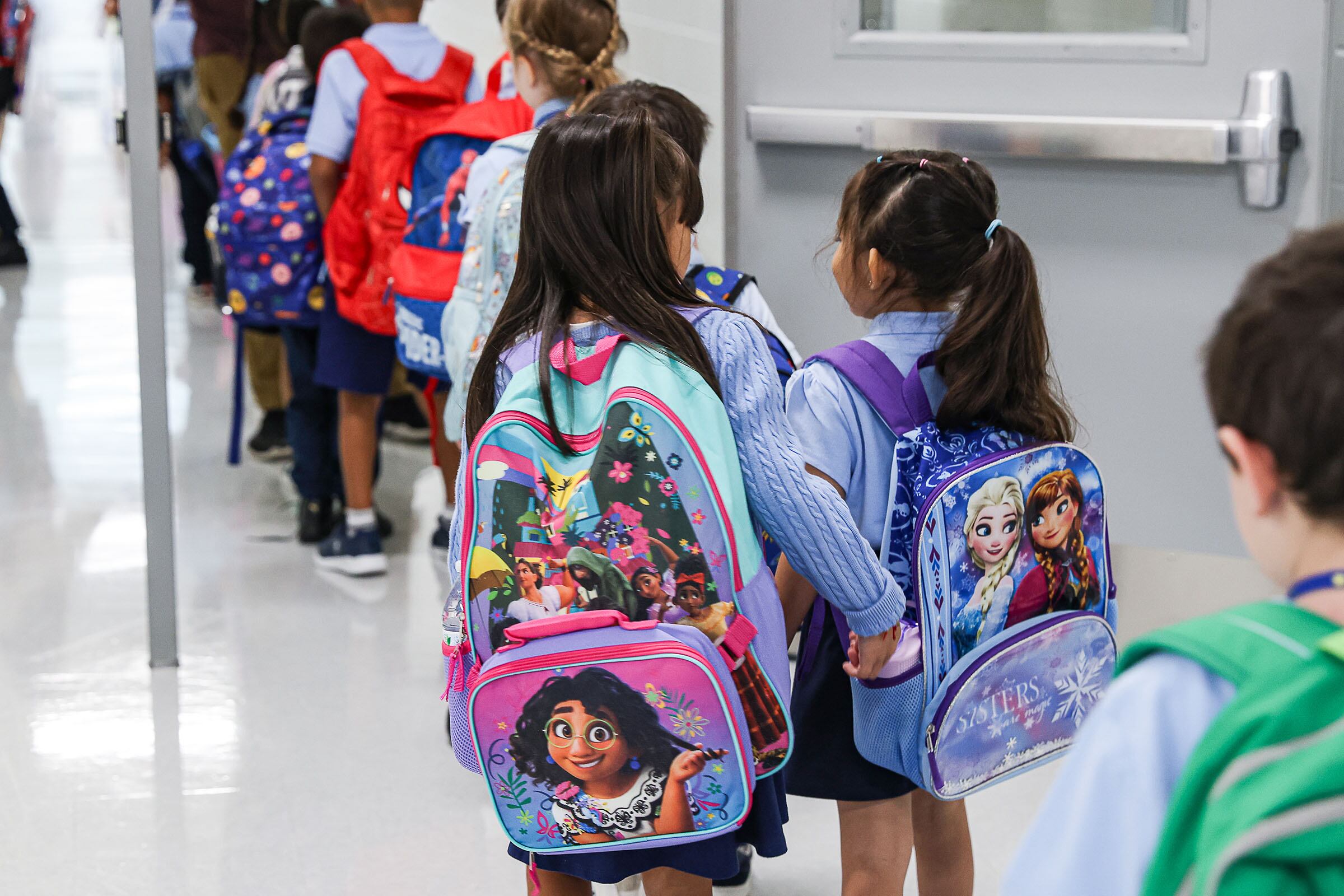Sign up for Chalkbeat’s free weekly newsletter to keep up with how education is changing across the U.S.
Fourteen states have taken up a challenge to significantly reduce the rate at which children miss a lot of school, responding to a recent call from a bipartisan coalition for states to prioritize school attendance.
Some of the states making the pledge have had among the highest rates of chronic absenteeism in recent years, such as Nevada, New Mexico, and Colorado. Others signing on include: Alabama, Arkansas, Connecticut, Iowa, Maryland, Nebraska, Ohio, Rhode Island, Virginia, Washington, and West Virginia.
More states have expressed interest and may join later this school year.
Each of the states that signed on is committing to cut chronic absenteeism, which counts the share of kids who miss 10% or more of their school year, by half over a five-year period. States will be able to choose their starting point and set goals from there. Some may start from the 2021-2022 pandemic school year, when absenteeism peaked in many schools, while others may start with a more recent year.
In a sign of how far and wide the nation’s chronic absenteeism crisis spans, the states are located across the U.S. and are led by a mix of Republican and Democratic governors.
The need to boost school attendance has become a rare point of bipartisan agreement in education policy, and that formed the backdrop for why three groups — the nonprofit Attendance Works, the civil rights group EdTrust, and the conservative American Enterprise Institute think tank — came together to launch this challenge in July.
“We did try to make sure we had a set of states who could bring a whole variety of conditions so that when we say it’s possible, it’s feasible, to reduce chronic absence by 50%, people see a state that looks kind of like theirs,” said Hedy Chang, the director of Attendance Works. “We think by demonstrating the possibilities that that will inspire others to join.”
A common theme among these “early adopter” states is that they won’t be starting from scratch, Chang said. Each had already committed to tackling absenteeism in their state and had some staff or initiatives in place. Some will be able to jump in quickly, while others will need some time to organize their teams.
Still, she said, the fact these states signed demonstrates there’s “a building consensus in the field that we need to address chronic absence, and that reducing chronic absence by 50% is a reasonable goal.”
Some states previously announced their intentions. Colorado, for example, has set a goal of having just 17.8% of students be chronically absent by the 2026-27 school year. Colorado’s goal would have more students attending school regularly than before the pandemic.
During the 2021-22 school year, more than 35% of Colorado students missed so much school they were considered chronically absent. While that rate has been improving, a recent Associated Press analysis found that Colorado had the fifth-worst rate of chronic absenteeism in the nation in the 2022-23 school year.

Arkansas plans to use last school year’s chronic absenteeism rate as a baseline, but has yet to release those figures. Around 26% of students were chronically absent in the state during the pandemic, and schools lowered that to around 22% in the 2022-23 school year.
“If students are not in class, they are not learning content they need to know,” Jacob Oliva, Arkansas’ education secretary, said in a statement. “That is why we are committed to participating in this program. We not only want to raise awareness about the importance of students being in school, but also to show our commitment to improving outcomes in this critical area.”
For some states, the goal won’t be too difficult to achieve.
In Connecticut, for example, 23.7% of students were chronically absent during the 2021-22 school year, and by last school year that rate had fallen to 17.7%. The state would need to lower absenteeism by another 6 percentage points over the next two years if it sets its starting point at the pandemic peak.
In Virginia, where Republican Gov. Glenn Youngkin launched a statewide task force focused on raising attendance, schools lowered the rate at which kids missed a lot of school from a pandemic high of 20.1% to 16.1% last school year, and would need to reduce it another 6 points to hit the campaign’s mark.
Similarly, in Rhode Island, where Democratic Gov. Dan McKee has attracted national attention for combating absenteeism with a comprehensive strategy, schools reduced their chronic absenteeism rate from 34.1% during the pandemic peak to 24.7% last school year. The state is now around 7.7 percentage points shy of the campaign’s goal.
Others have further to go. New Mexico, for example, cut chronic absenteeism from a pandemic high of 40.7% to 32.8% last school year, making it still 12.4 percentage points above the target.
And several other states have yet to release chronic absenteeism data for last school year.
A few states that signed the pledge are among a wave of states that have passed new laws aimed at getting more kids to regularly attend school. West Virginia passed a law requiring schools to get in touch with families after just one absence. Iowa has a new law that requires the families of kids who are on track to be chronically absent to meet with school staff — a step put in place before they get referred to the county attorney.
Carl Felton III, a policy analyst at EdTrust, says his organization is hoping to use this campaign to nudge states to use strategies to boost attendance such as building relationships with families, providing mental health support to kids, and creating a welcoming school environment. On the flip side, they want to discourage punitive policies like referring families to truancy court, fining parents, or calling in police officers.
“It can make folks feel attacked or blamed,” he said, “when really what people need is support.”
Kalyn Belsha is a senior national education reporter based in Chicago. Contact her at kbelsha@chalkbeat.org.






